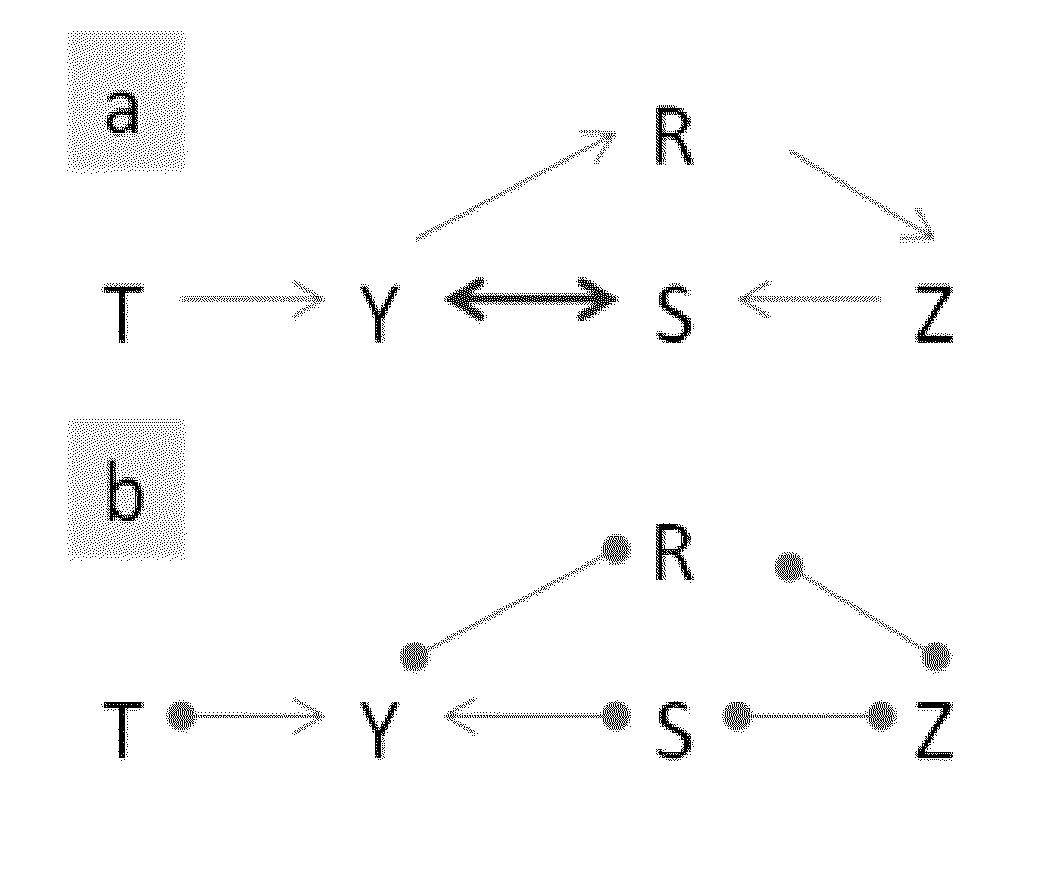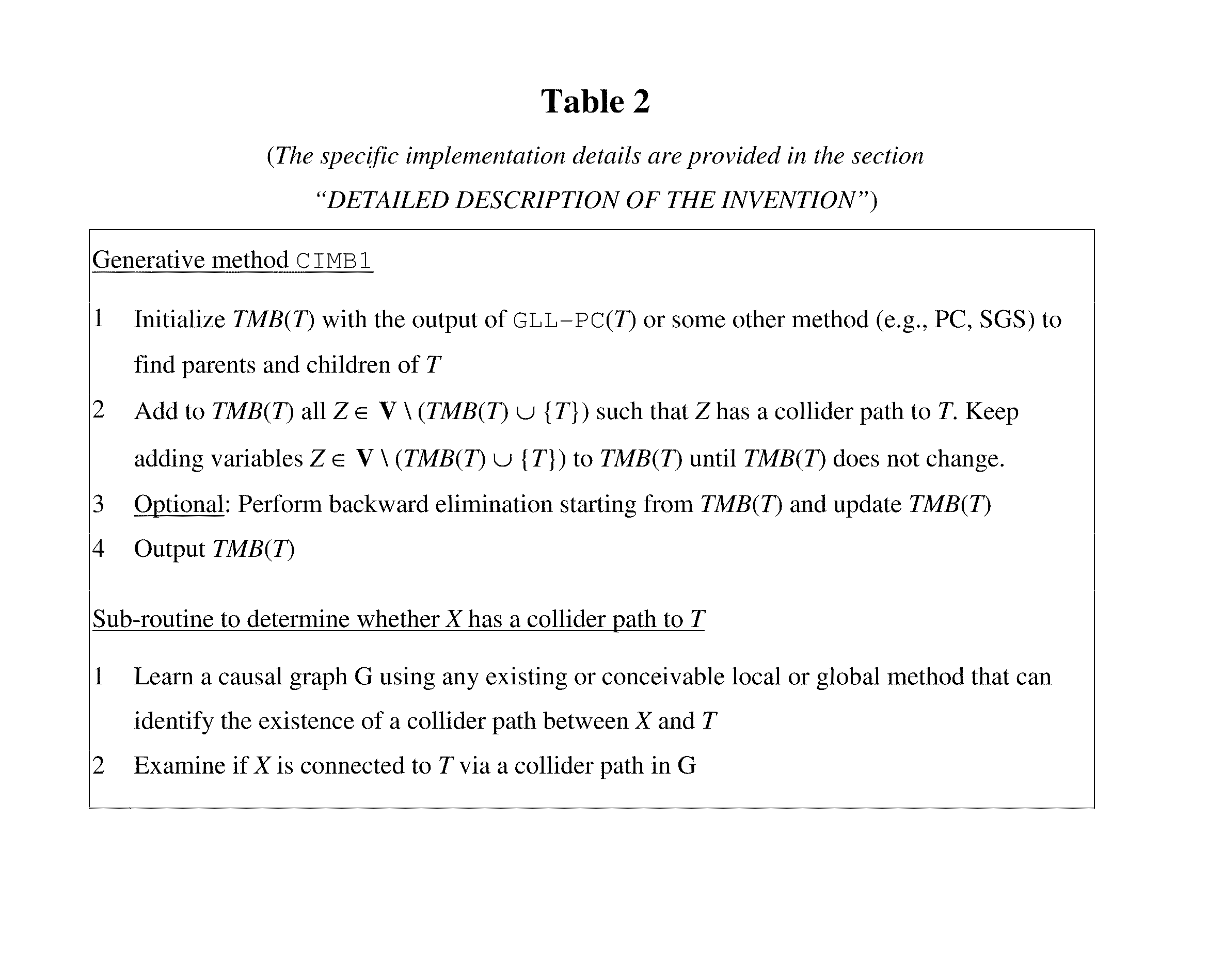Computer Implemented Method for Discovery of Markov Boundaries from Datasets with Hidden Variables
a dataset and hidden variable technology, applied in the field of computer implemented method for discovering markov boundaries from datasets with hidden variables, can solve the problems of very restrictive assumption and violation of assumption
- Summary
- Abstract
- Description
- Claims
- Application Information
AI Technical Summary
Problems solved by technology
Method used
Image
Examples
case b (
[0051]The examples provided below motivate the reasoning behind collider orientation rules that are described in steps 19-29 of the CIMB* method (and denoted as Case A and B in the CIMB* pseudo-code):[0052]Case A (Y and Z are not adjacent): Consider two graphical structures shown in FIGS. 1a and 2a. Assume that CIMB* reached point of its operation when it identified the structures shown in FIGS. 1b and 2b. One wants to determine if Z belongs to a MB(T). For both structures, W={R} is a sepset of Y and Z (i.e., Y is independent of Z given W). Since Y is dependent on Z given W∪{S}={R, S}, Z is MB(T) member.[0053]Case B (Y and Z are adjacent): Consider a graphical structure shown in FIG. 3a. Assume that CIMB* reached point of its operation when it identified the structure shown in FIG. 3b. One wants to determine if Z belongs to MB(T). The sepset W of T and Z is empty. Since T is dependent on Z given W∪{A1, A2, Y, S}={A1, A2, Y, S}, Z is MB(T) member.
[0054]The following describes several...
PUM
 Login to View More
Login to View More Abstract
Description
Claims
Application Information
 Login to View More
Login to View More - R&D
- Intellectual Property
- Life Sciences
- Materials
- Tech Scout
- Unparalleled Data Quality
- Higher Quality Content
- 60% Fewer Hallucinations
Browse by: Latest US Patents, China's latest patents, Technical Efficacy Thesaurus, Application Domain, Technology Topic, Popular Technical Reports.
© 2025 PatSnap. All rights reserved.Legal|Privacy policy|Modern Slavery Act Transparency Statement|Sitemap|About US| Contact US: help@patsnap.com



